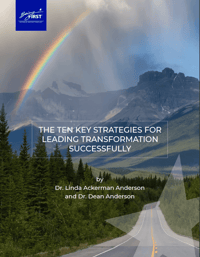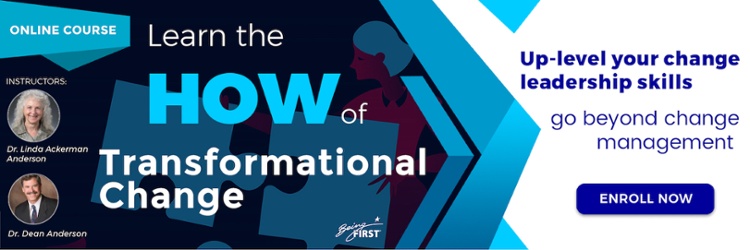After observing and working with senior sponsors of organizational change for four decades, we have seen the best and the worst. Are you a good sponsor? Are you doing what your change efforts need to be successful and sustainable over time?
Many leaders are named sponsor of an initiative without understanding what the role requires, especially if their projects are large, transformational, or challenging for their stakeholders. Our observations have identified the top five best practices of effective sponsorship that has the potential of producing breakthrough results from change. This blog outlines
The Top Five Best Practices for Change Sponsorship
- Launch effectively to build understanding, project viability, and momentum. This requires announcing, explaining in terms stakeholders understand, and setting up conditions for success that can be seen as your true support for the effort.
Launch also requires good governance and a regular cadence of determining both status and the need for course correction to the process or the solution. “Lift off” goes well beyond announcement!It sets the stage for project viability, sustainment, and the potential for breakthrough results. - Understand and address the full implication of what your proposed solution requires of the organization, its culture, and its people. All sponsors want to secure the best content solution for the issue you are solving. This best practice responsibility ensures you are giving equal attention to the impacts on all related or interdependent parts of the organization, its cultural norms, and the people who must make the new state a reality. No solution will sustain if everything is not scoped, aligned, and supported from start to finish. Breakthrough requires it. This takes a broader view of what needs attention in the process and more time than you think!
- Ensure the organization and your stakeholders have the capacity and capability to succeed. Adequate capacity to make change happen is the number one issue impairing the success of projects. Sponsors need to think through what kind of time, attention, and resources their new solution requires to be designed and planned, as well as the time, skills and, knowledge stakeholders need to learn and be successful. When you provide this support, only then will stakeholders want to make the change a success!
- Put yourself front and center in modeling what the change requires. Early in the change process, sponsors must seek to understand the types of behaviors, mindsets, relationships, and new cultural norms the change requires. If the new solution depends on new ways of being, thinking, and relating across boundaries, the leaders are the strongest catalysts of making and sustaining that personal change. You go first and be open about it! This is one of the best catalysts for the energy that generating breakthrough requires.
- Be willing to alter course when it becomes the obvious thing to do. Whether it is the change process or plan, the timeline, the solution, or any other aspect of the change that is not set up to get you what you need in the long term, push the pause button and explore what needs to be different…then do it! Rapid course correction, when safely surfaced from any level of the organization, is another energizer for change and essential to your getting the best results. As one of our clients said, “We never have time to do it right; we always have time to do it over!” Design the change process to make sure you and your team get smarter by the
day, and commit to the best future rather than any pre-supposed timeline.
Change Sponsor Is More than a Title
Being an effective change sponsor is more than giving the green light and waiting for periodic status reports. A great executive sponsor is a commitment to understand and do what your effort requires to achieve and sustain business benefits. It takes more than naming a good project leader and team players to do the work of the initiative. Set an example by staying connected to your team and your stakeholders, getting involved where senior leadership intelligence is required, and staying visibly invested from start to successful completion. Only then will you get your breakthrough results as well as the loyalty and esteem that belong to a conscious change sponsor.
Related Webinar:
Sponsor-Project Lead Partnership Best Practices Proven to Maximize Transformation Results
Instructor: Dr. Linda Ackerman Anderson
This webinar explores a four-step process for creating an effective sponsor-project lead partnership and the proven principles that drive it. You’ll get our best practices and tips for building a sponsor-project lead partnership derived from our 40+ years as experts in leading transformation.
Featured eBook:
The Ten Key Strategies for Leading Transformation

Through 40 years of observing and supporting large-scale change and transformation in Fortune 500, government, global NGOs and public service organizations, we’ve identified these ten Best Practice strategies for leading transformation successfully.
Please complete the form to download your eBook:

